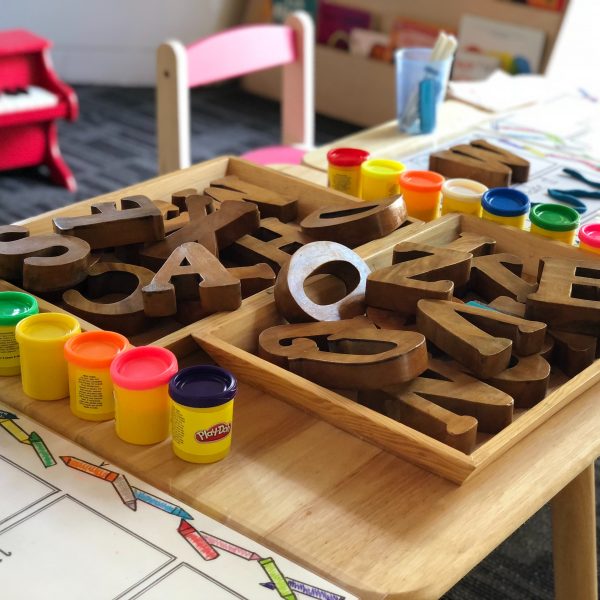For-profit and LDC services A&R improvements stand out
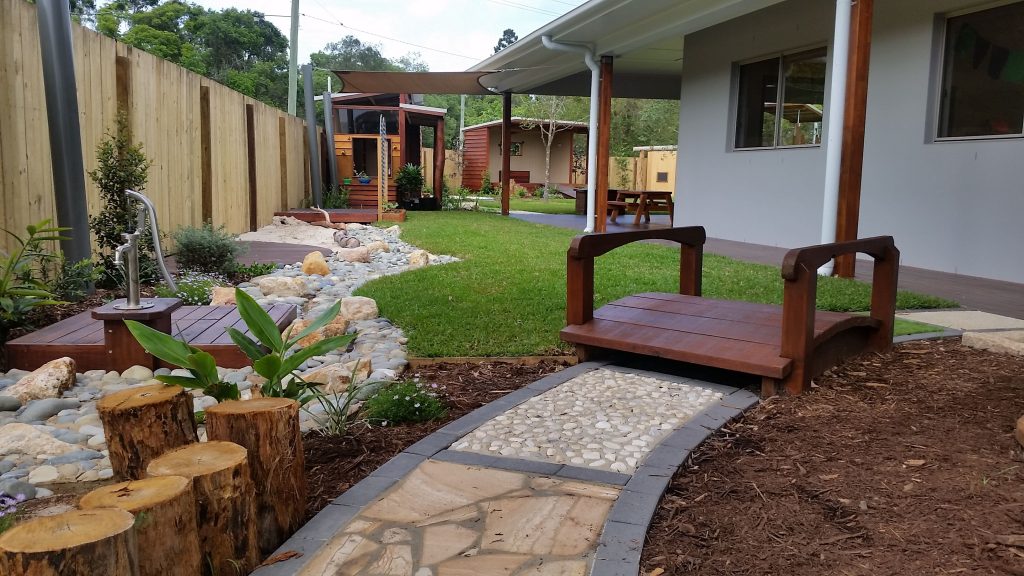
The number of private for profit services and long day care (LDC) services with a rating of ‘working towards’ the National Quality Standard (NQS) has dropped to the lowest level since the data series began being published, according to the Australian Children’s Education and Care Quality Authority’s (ACECQA) latest NQF Snapshot.
The percentage of working towards services in the private not for profit other organisation, state/territory and local government and Catholic schools categories also recorded new low levels, as did the Outside School Hours Care (OSHC) and Family Day Care (FDC) settings, reflecting the broader cross sector trend of quality improvement in recent years.
Overall now, 20 per cent of all early childhood education and care (ECEC) services are rated as “working towards”, down from 27 per cent in the same period three years ago.
Private for profit still lagging not for profit setting but gap continues to narrow
The private for profit governance managed settings, which will include LDC, FDC, OSHC and preschool/kindergarten services, make up 7,862 (or 49 per cent) of all services in Australia and at this juncture as a cohort have 25 per cent of their services rated working towards, down from 36 per cent in Q1 2017.
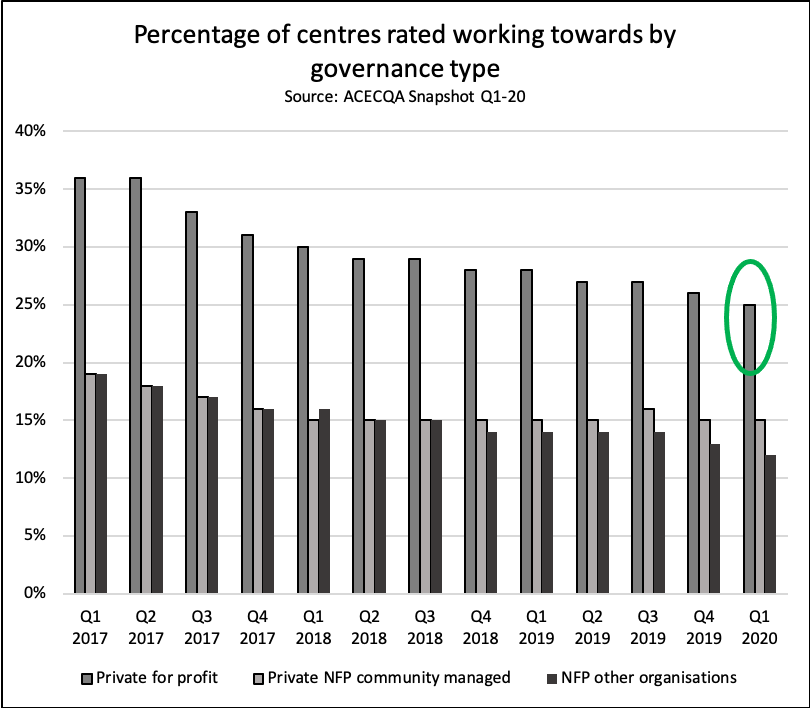
Limitations in the data provision prevent an analysis of which for profit settings are performing better than others ie: LDC v FDC, which is unfortunate as it prevents the ability to isolate the relative performance of settings types from a governance perspective and see where the leaders and laggards are.
That being said, for profit services generally have lagged their not for profit peers in assessment and rating (A&R) performance, and still do by a relatively, albeit contracting, margin.
The private not for profit community managed group, which accounts for 21 per cent of the sector, has shown consistency in terms of the number of services rated as working towards in the last three years, with around 15 per cent of services receiving the rating.
LDC services rated working towards now below 20% with FDC lagging and kinder leading
The proportion of LDC services rated working towards is now below 20 per cent for the first time since this data set began.
LDC services, which account for 50 per cent of all services in Australia, saw 19 per cent rated working towards as at the three months ended 31 March 2020, well ahead of FDC which saw 50 per cent rated working towards and behind kindergartens and preschools which recorded just 7 per cent.
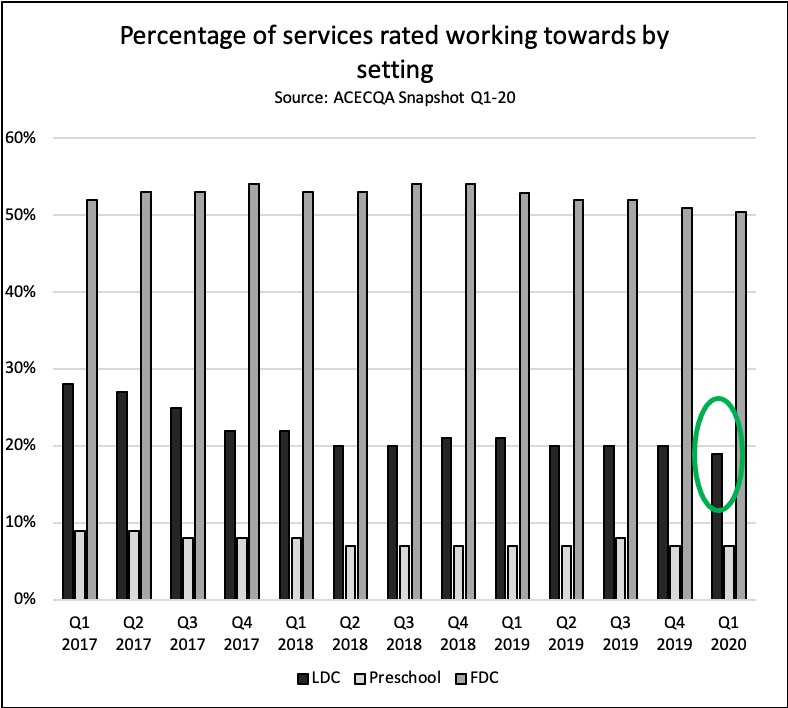
OSHC settings also performed relatively well in the period, having recorded 26 per cent of services rated working towards, a new low for this series. OSHC services currently make up 28 per cent of all licensed ECEC services in Australia.
Retaining exceeding rating after reassessment results steady but trend still lower
Since the introduction of more stringent “assessing exceeding centre” guidelines introduced in the first quarter of 2018, the percentage of services retaining their ‘exceeding the quality standard’ ratings after reassessment has fallen from above 60 per cent to around 50 per cent.
The slight uptick, to 51 per cent, which was observed in the three months ended December 2019 has reverted to 50 per cent again, which suggests some stabilisation. That said, it remains unlikely that the results will revert to those recorded prior to the new guidelines being introduced.
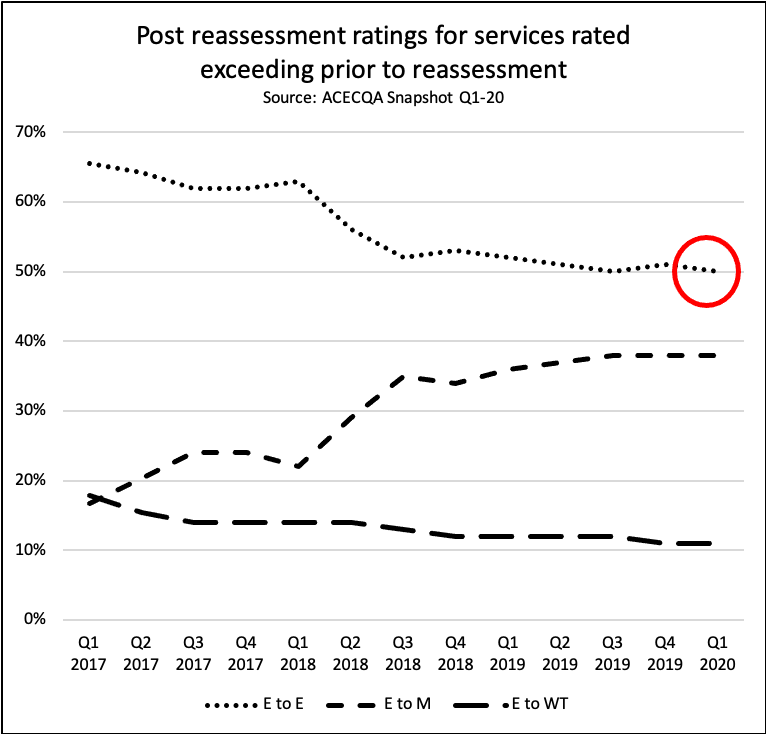
Of those services not reassessed as exceeding, 38 per cent were rerated as meeting and 11 per cent rerated as working towards.
Less working towards and less exceeding sees meeting numbers swell
A direct consequence of less working towards ratings and less exceeding ratings is the growth in the meeting category, which is a strong trend in place across governance types and settings but also across states and territories.
With respect to the latter category, every region across Australia has seen substantial increases in the number of services rated ‘meeting’ in the last three years as the twin trends of improving quality (working towards to meeting) and tougher exceeding guidelines (exceeding to meeting) express themselves.
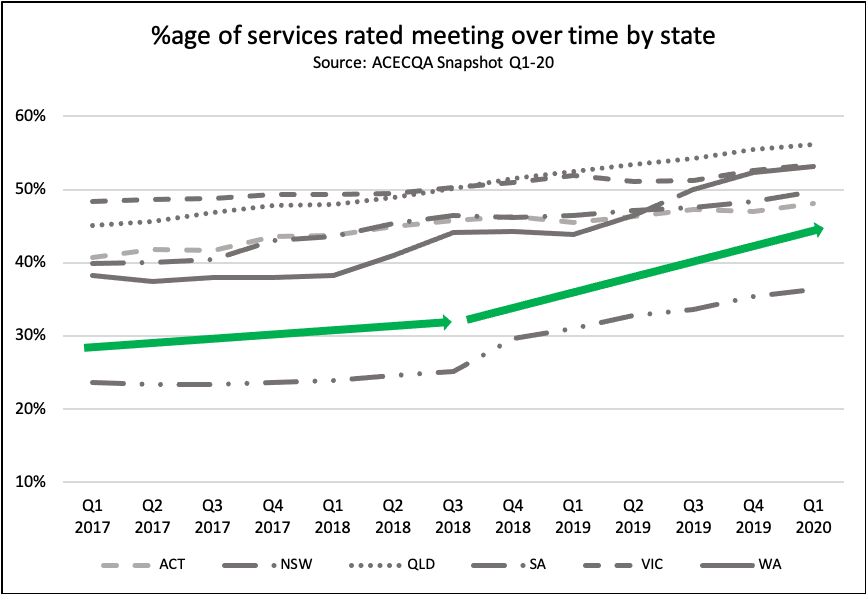
What is unclear at this juncture is the consequences of this pull to ‘meeting’ rating. On one level it is terrific to see standards rise in terms of less working towards centres operating, but on the other it is concerning that exceeding centres appear to be on the decline overall as well.
That being said, the total proportion of working towards, meeting and exceeding centres is 20 per cent, 51 per cent and 30 per cent respectively, which statistically and realistically is probably the right balance given the huge diversity of service across ECEC in Australia.
To read the Snapshot please click here.
Popular

Policy
Quality
Practice
Provider
Research
Workforce
ECEC services to close early for mandatory child safety training under national reforms
2025-12-01 07:10:09
by Fiona Alston

Quality
Policy
Practice
Provider
Workforce
Growth restrictions and enhanced oversight imposed on Affinity Education Group in NSW
2025-12-01 07:30:29
by Fiona Alston

Workforce
Events News
Policy
Practice
Provider
Quality
Gold Walkley Award win for childcare investigation places national spotlight on safety and accountability in ECEC
2025-12-02 07:30:34
by Fiona Alston
















